By Luca Seidenari
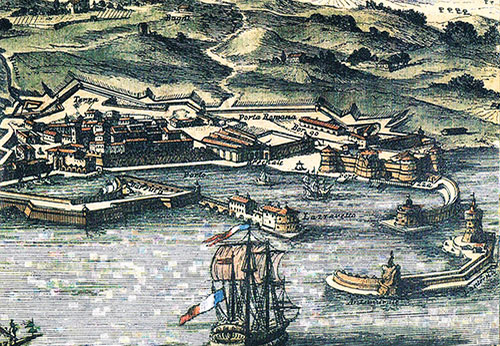
The harbour of Civitavecchia, situated on the remains of the old Roman Harbour of Centumcellae, was built In the beginning of the second century AD by the emperor Trajan near his villa. The project is probably carried out by the emperor’s favourite architect, Apollodoro of Damascus. The last one also was the architect of another contemporary harbour, the harbour of Ancona, and many other constructions from that time.
The younger Pliny (Epist. 6.31) is the first author to mention Centumcellae. He was summoned to the emperor’s council and wrote in a letter to his friend Corneliano:
The harbour was built in the shape of an amphitheatre with a curved breakwater on the southern side and a straight one in the north. The straight breakwater was equipped with tunnels for elimination of the waves.
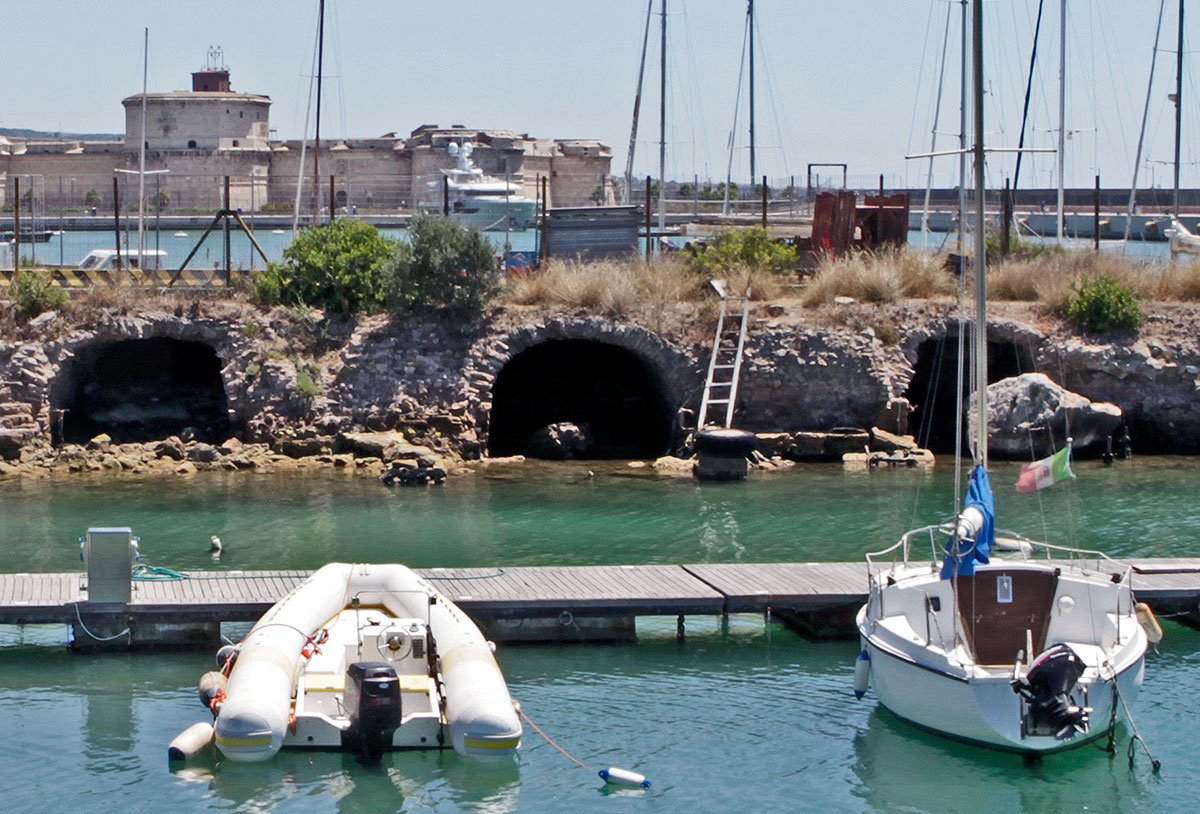
The harbour was also protected by a so-called ‘antemurale’, (an offshore wall) in this case an artificial island, built up from stones obtained from the excavation of the darsena (inner harbour). This darsena was (and still is) located at the northern side of the port basin.
The island lay about 500 meter off the coast, the two breakwaters at a distance of 400 meter from each other. That gives the basin a total area of 200.000 square meter. The average depth of the harbour was about 6 meter.
At the end of each breakwater a fortress was built. The one at the southern side was called by the inhabitants ‘il Bichiere’(the glass) after its shape. The other one on the north side ‘il Lazzaretto’ (the Lazaret).
On both ends of the artificial island there were also two small fortresses with a big lighthouse in between in the middle of the island.
The ancient port was undoubtedly equipped with colonnades, temples, columns and statues as can be seen from the several debris found back around the harbour. Behind the darsena the remains of a large basilica (courthouse) have been found with a length of 100 meter and a width of 38 meter. The basilica was divided in three galleries by two rows of columns. This shows the importance of the port also from financial point of view for justice and trade.
Probably there was also a temple for Neptune because of several bronze parts of a statue of that god that have been found.
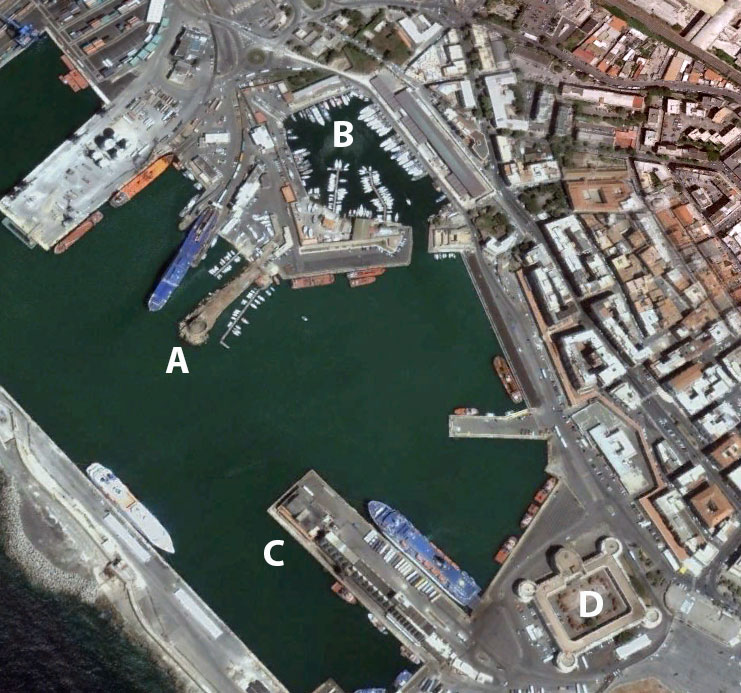
of the lost breakwater; D-fortress Michelangelo
The structure of the harbour is pretty much preserved up to the beginning of the 20st century despite the turbulent times through the ages (such as the attacks and destroying during the Gothics wars, the many looting by the Saracens in the ninth century and the several wars for dominance over the port). Unfortunately the numberless aerial bombardments during the second world war have destroyed a large part of that structure for ever.
Nevertheless, the shape of the antique Roman harbour can be recognized by two side breakwaters and the (modern) antemurale. There are also parts left of the antique port basin like the old Roman darsena, which shape is very much the same as it was in Trajan’s time and not to forget the breakwater with the fortress called the Lazzaretto.
Through the tunnels in the breakwater the seawater can still flow away so that the water in the large basin and the darsena always are refreshed. A good example of the technical skills of the ancient Roman engineers.
The breakwater with its fortress became even more interesting after the numerous restoring and rebuilding between the 16th and 17th century. After a plague epidemic the fortress was used as a hospital for the plague patients and so it remained up to about 1800. That’s why people called it the fortress of the Lazzaretto. The other breakwater with the fortress Bicchiere was completely destroyed during the second world war.
Other Roman remains of the harbour can be seen in the small corridor between the large basin and the darsena. Here are still witnesses of the old port warehouses which were used during the middle ages as fundament for the so-called ‘Rocca’ above.
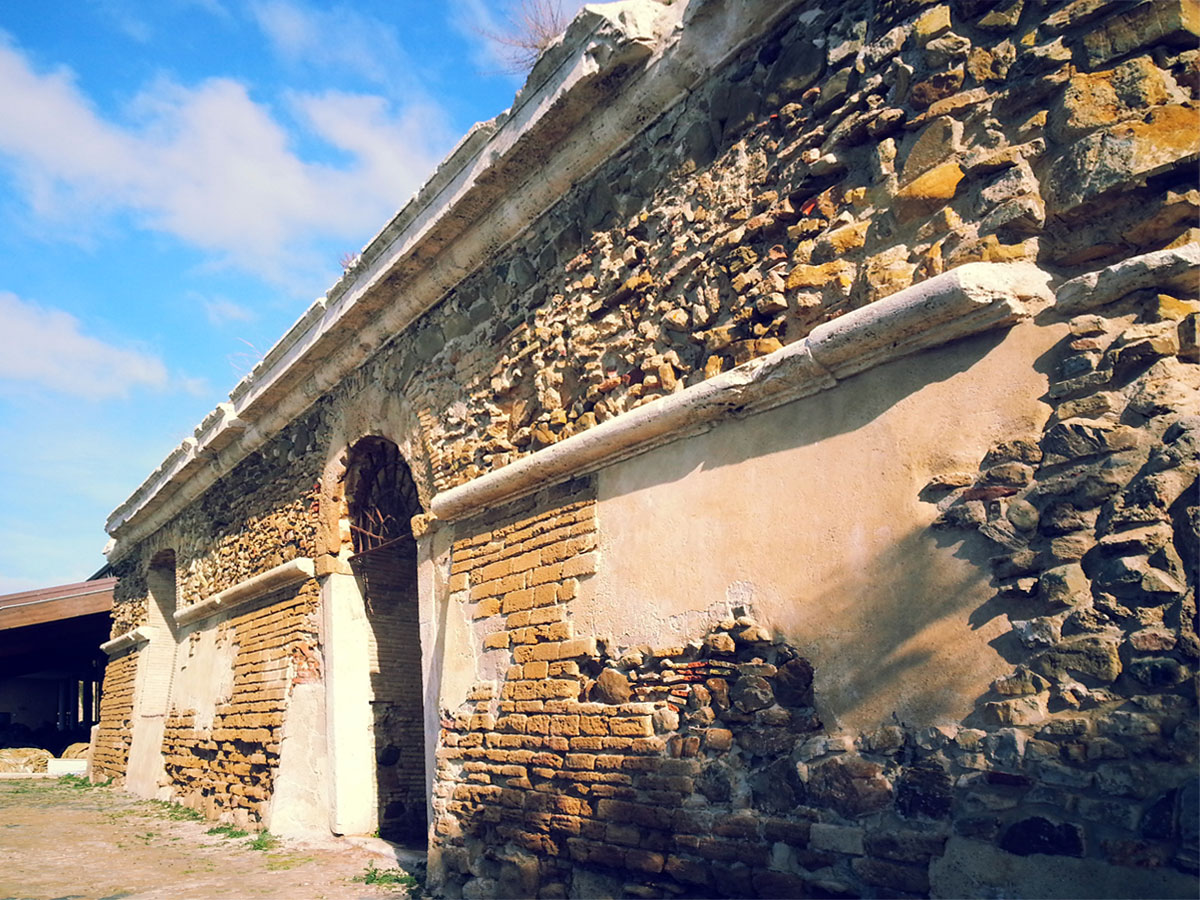
Many ruins of ancient Roman housing have been found during the construction of the Fort Michelangelo around 1500, including the remains of beautiful mosaics. Especially inside the fort.
Under a chapel, dedicated to Saint Fermina, the patroness of the city, is still a subterranean room from Roman time. This room was left because of an old story in which the room should be the living place of Fermina while she was in Centumcellae.
Just outside the port, In the middle of the basement of the apartment buildings, we find the remains of a bathhouse and Roman habitation from the city of Centumcellae.
Parts of the Roman wall around the city are still visible in the rooms under the seat of the Fraternity of the Banner in the Piazza Leandra, just near the church of Santa Maria della Stelle.
In a quarter called Belverdere, about 1 km from the harbour, on the territory of the former military academy ( today called Ce.Si.Va) we can find considerable remains of Roman structures including a large cistern (water reservoir) probably belonging to Trajan’s villa.
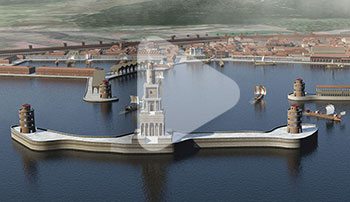
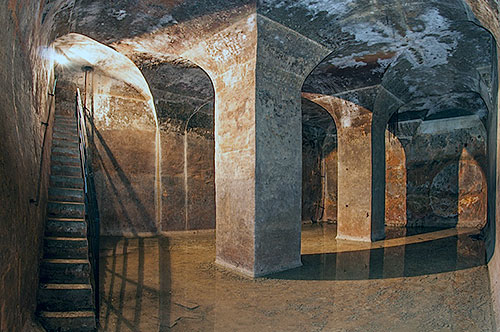
- Notes
- 1:EPISTOLE Lib VI: XXXI C.PLINIVS CORNELIANO SVO S. A letter for Corneliano (translation)
This delightful villa is surrounded by the greenest meadows, and overlooks the shore, which bends inwards, forming a complete harbour. The left arm of this port is defended by exceedingly strong works, while the right is in process of completion. An artificial island, which rises at the mouth of the harbour, breaks the force of the waves, and affords a safe passage to ships on either side. This island is formed by a process worth seeing: stones of a most enormous size are transported hither in a large sort of pontoons, and being piled one upon the other, are fixed by their own weight, gradually accumulating in the manner, as it were, of a natural mound. It already lifts its rocky back above the ocean, while the waves which beat upon it, being broken and tossed to an immense height, foam with a prodigious noise, and whiten all the surrounding sea. To these stones are added wooden piers, which in process of time will give it the appearance of a natural island. This haven is to be called by the name of its great author, and will prove of infinite benefit, by affording a secure retreat to ships on that extensive and dangerous coast. - 2: fotografia: Paoblog.net






 We are committed to providing versions of our articles and interviews in several languages, but our first language is English.
We are committed to providing versions of our articles and interviews in several languages, but our first language is English.